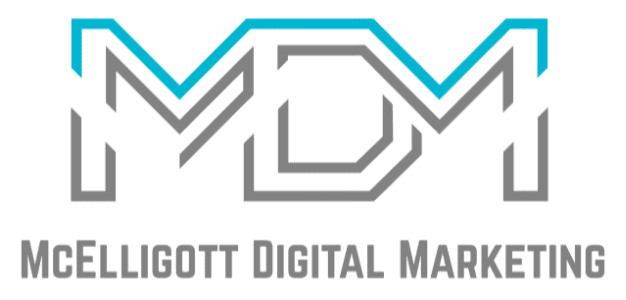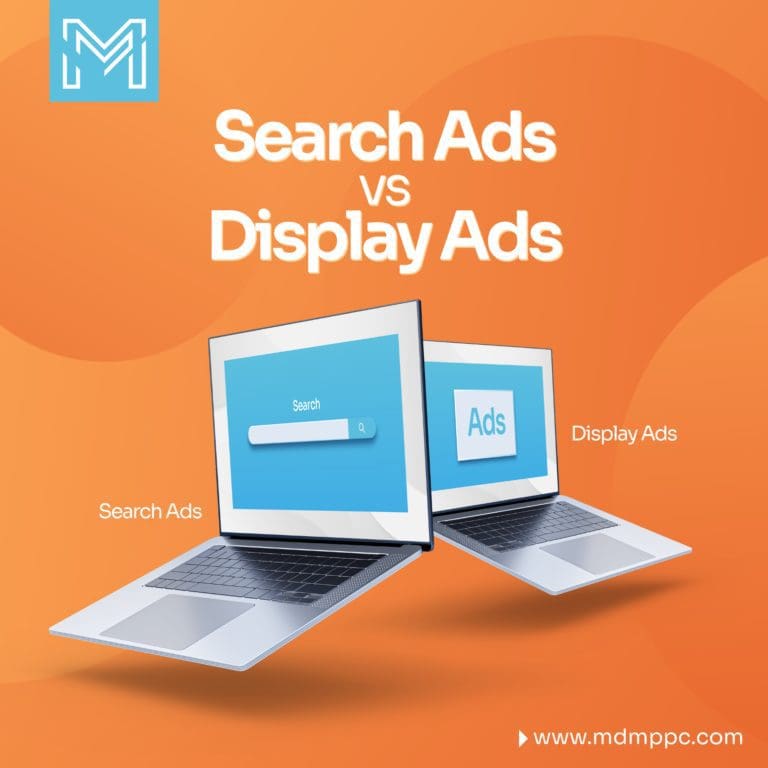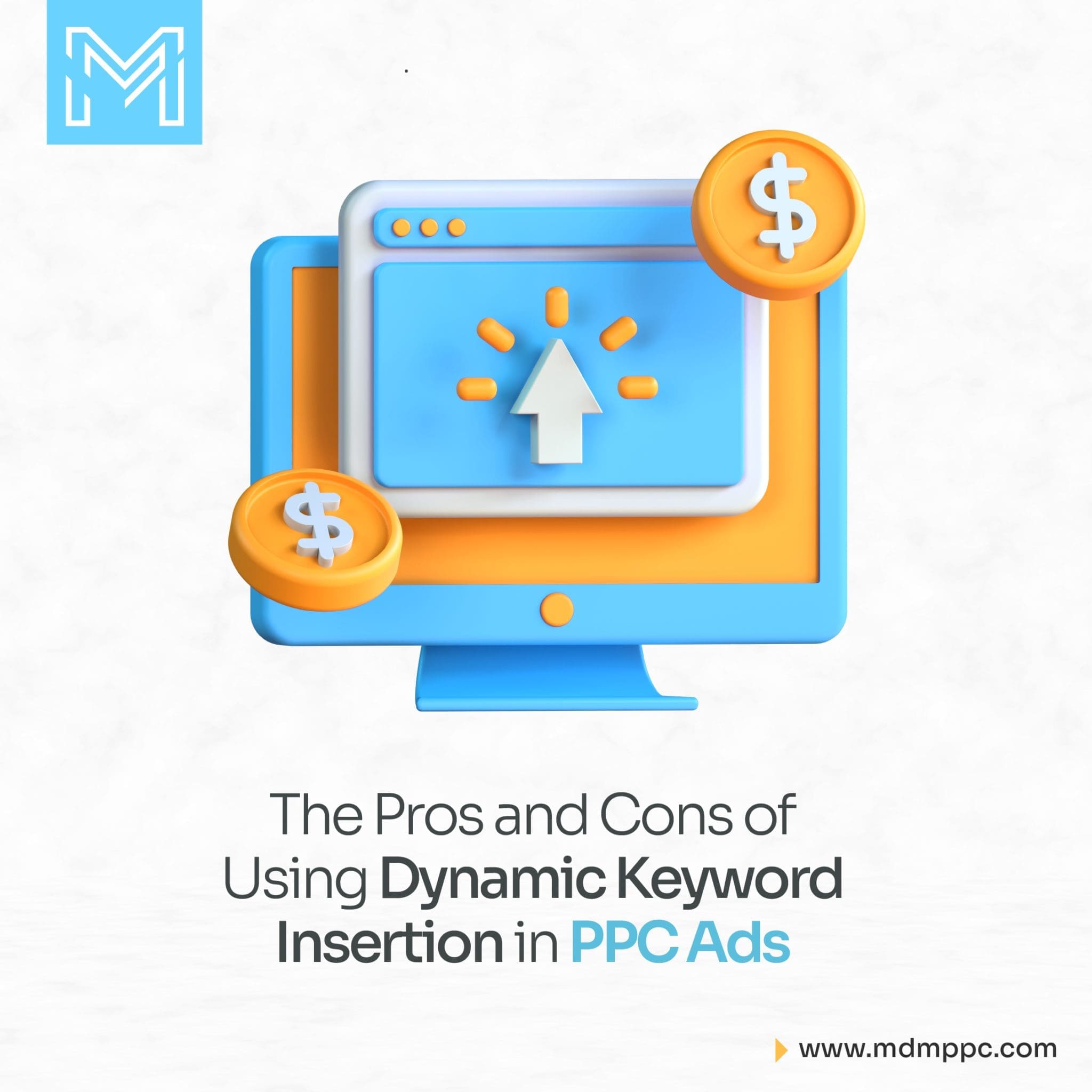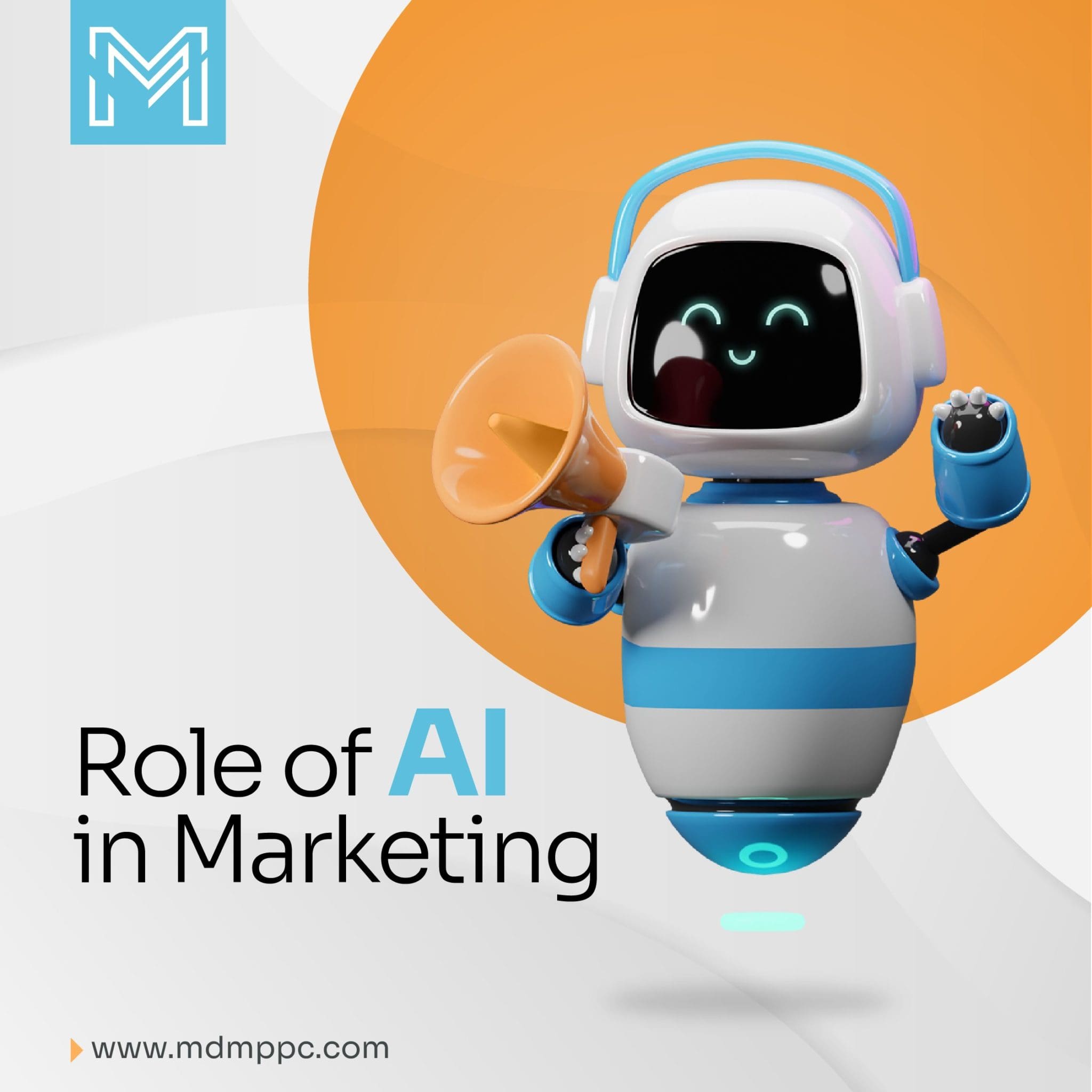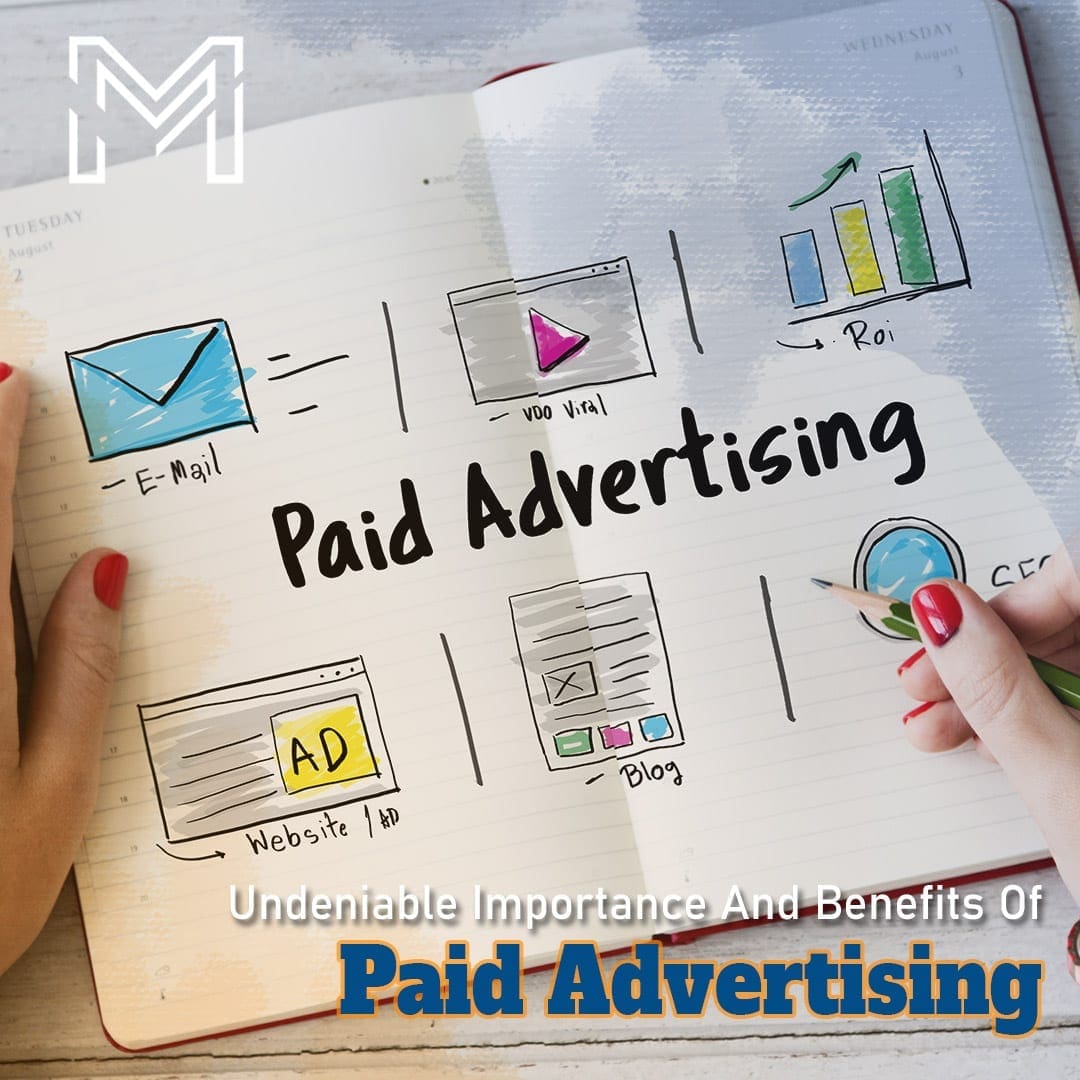Search ads vs display ads- which do I choose for the digital marketing of my business?
This question moves along the same trajectory to answer somehow like ‘it depends’, but in this blog, we’ll help you know which to choose depending upon your business and the goals you want to achieve.
Search ads and display ads both are effective digital marketing methods, but they are largely different from each other.
Now, if you want to know which ad platform is the best fit for creating brand awareness and which is best for driving sales, you’ve to understand both.
Each advertising type is tailored to a certain target consumer with specific goals.
It is important to match your ad network and creativity to the right intent for the effectiveness of ads. If you don’t, you risk wasting money on clicks that will never convert.
Let’s start by defining search ads and display ads.
What are search ads and display ads?
1. Search ads
Paid search advertising or search PPC is one of the most common types of PPC advertising, in which companies pay (via an auction-based approach) to have their adverts appear above and below organic search results when people search for specific keywords.
For example, when a user searched for ‘cleaning services’ near his location, this ad appeared before the organic search engine results.
A search ad’s three major components are a headline, a display URL, and description text, all of which are intended to persuade readers to click through the ad. Ad extensions can also be used to deliver some extra information that might be useful to users.
The bid and Quality Score or QS determine how frequently search advertisements show, their ranks, and the cost per click.
If a user goes to Google and looks for a topic connected to a pressing problem or need. And above the organic results, the ads appear.
The user clicks the ad, fills out the form, or buys the thing. Any of these adverts would take me to a landing page if I clicked on it.
This leads us to a point:
When it comes to capturing intent, search advertisements are the way to go.
If you want to maximize the return on investment or ROI from your search network advertisements, you must concentrate on the searcher’s intent.
Display ads
When we talk about display ads, we are, in fact, talking about browsing a website or Facebook.
Even though Google display ads are still served through the Google Ads interface, it performs considerably differently from paid search ads.
The primary distinction between Google search advertisements and display advertisements is that search ads are “pull” advertising, whereas display ads are “push” advertising.
In other words, search advertisements appear exclusively to people who are actively looking for your product or service, whereas display advertising is paid ads that appear depending on numerous targeting parameters.
Display ads may appear to you even if you didn’t instantly look for the related product or service.
Furthermore, unlike search ads, adverts are not confined to showing in a single spot (in the SERP). Display advertising may be found on over 2 million websites, reaching over 90% of internet visitors.
They can appear in a variety of locations on social media, including natively in the news feed of platforms like Facebook, or even on emails.
Search ads vs Display ads: Advantages
Pros of Search ads
There are several benefits to using search ads or search engine marketing (SEM). Your marketing budget is the first of several elements to consider.
If your firm’s available engine spend is on the bottom, say less than $11,000 per month, SEM may be the ideal technique for you, since it gives you more command over who reaches your business and when they find it. In SEM, targeting the proper keywords is critical for catching consumers looking for your product or service.
By becoming more targeted and purposeful in keyword targeting, your business avoids wasting money on those who aren’t interested in the sector or aren’t ready to make a purchase.
Another advantage of search engine marketing or running search ads is that firms can simply appeal to a local market. Multiple targeting strategies may be used with keyword targeting to create more narrow and targeted audience groups. If we talk about Google Ads, geographic (geo-targeting), language, gender, age, and affinity (or interest) targeting are all possible groups.
The selling cycle in SEM is often quick, and you want to grab people near the bottom end of the funnel or at the time of purchase. As a result, unless remarketing is a vital approach for your organisation, there is no reason to keep marketing to individuals who have taken any action or purchased on-site. This method keeps audiences interested and adaptable.
Pros of Display ads
Display advertising is an efficient marketing strategy for any product or service that is visually appealing.
Clothing, automobiles, cosmetics, pet care, and other products are all ideal choices for display ads since the client offering may be swiftly and aesthetically described with a single image.
Display ads may still be a successful ad type in less aesthetically appealing businesses, such as SaaS, insurance, education, or many B2B services…but then it requires a different strategy. Short striking sentences or remarks, a core value proposition, or some form of explanation visual (such as pictures) are preferable ways to immediately attract a display ad audience in these areas.
If the call-to-action or CTA and main message of a display ad cannot be comprehended in less than 3 seconds… it tells that your messaging is ineffective and should be reconsidered.
Another benefit of running display ads is that it gives you exclusive access to special or luxury consumers.
There are many demand-side platforms (or DSPs) that allow you to create segments as specific as a website list that you expect your potential clients would visit. Data mining when combined with display ads is another efficient way to get your content to the right person at the right time. But you’ve to make sure your data source adheres to all privacy regulations in your target geographical location.
Another way to get the best out of display advertisements is to focus on increasing brand recognition. Consider display ads as a good medium if you want to develop brand equity or increase top-funnel traffic to your site.
Simple company statements or photos of main items should be used. If it appears to fit on your website’s homepage, it most likely belongs in a brand exposure display ad.
Comparing the average metrics: Search vs Display Network
Google Ads industry benchmarks for every ad platform differ, two key variables to consider when comparing display ads versus search ads are conversion rate and cost per click.
Average Cost per click
The average CPC for display ads is lower than the search ads. The average cost-per-click is around $2.41 for search ads, and it is $0.59 for display ads. Check the stats below:
Source: instapage.com
Average conversion rate
The average conversion rate or CVR for search ads across all industries is 4.40%, whereas the CVR for display advertisements is merely 0.57%.
Source: instapage.com
Have a look at how the greatest display conversion rate (1.12% for hobbies & leisure) falls short of the lowest search conversion rate (2.77% for clothes).
Search advertisements often generate more conversions than display advertising because the Search Network exposes marketers to consumers who are actively seeking items with higher purchase intent, making them more likely to convert.
Undoubtedly it’s a great benefit for companies trying to save on ad spending. However, every organization has different business goals.
So how do you know which ad type is for your business?
When to use Search ads?
1. To increase organic traffic- Let’s accept it, some businesses cannot afford to bear the time required for SEO to show results. While organic results concentrate on competitive content, search advertising gets visitors to solutions much faster. As a result, search ads are an excellent short-term technique for supplementing your organic visibility.
2. To capture intent- Advertisers get $2 on average for every $1 spent on the search ads- Google Economic Impact Report.
Businesses can double their investment in it.
The search ads network is straightforward: a user goes to Google and searches for a topic connected to a pressing pain point or requirement. They then open the ad, fill out the required form, or buy the thing.
When it comes to capturing intent, search advertisements are the way to go.
When a user needs to find a solution, they can easily find it on the search network.
If you want to maximize the ROI from your search network advertisements, you need to concentrate on searcher intent.
3. When you offer a local service- If you provide a local service and want to target the audience in your area, search advertisements are the preferable alternative. With such a limited, specified target demographic, reaching a global audience with display advertisements will be ineffective.
4. If you’ve got a low marketing budget- For many reasons search advertising should be your go-to choice if you’re just getting started or designing a low-budget campaign.
You can pay on each click or per 1,000 impressions with a PPC ad campaign.
Spending on highly relevant keywords and keyword phrases allow you to have more authority over who you contact, resulting in more qualified leads, greater conversion rates, and a larger ROI.
PPC ads are easier to monitor and evaluate — and after you’ve nailed those, you may consider expanding to the Display Network.
5. If you provide ‘urgent’ services- If you offer an “urgent” or “emergency” service (plumbers, locksmiths, tow trucks, emergency vets, painters, etc.), start with search advertisements. Urgent services are those someone is unlikely to pay for when reading a blog post or browsing through Facebook and coming across your display ad.
Instead, if someone is locked out of their car or needs a rescue unexpectedly, they are likely to look for a service that can assist them right away.
Urgent services will more likely be searched for via a mobile device. You can use call extensions to make it easier for the person in need.
When to use Display ads?
1. For visual-specific services- One of the significant benefits of display advertisements over search advertisements is their ability to integrate graphics and video. This is ideal for advertising consumer goods and services that rely primarily on the visual display, such as clothing, home décor, vacation packages, and adventure/entertainment services.
Display advertising work especially effectively with visual digital content such as video, digital books, infographics, and so on.
Google has made it easier for marketers to launch video ads, particularly advertisers who can use current video content. Because consumers are more likely to interact with a video than text or picture ads, this may be an exceptionally successful display ad choice.
2. To create brand awareness- Many people who visit websites and encounter display advertisements are not actively looking for a product. They’re presumably still in the marketing funnel’s exploration or awareness stage, reviewing their alternatives with passive intent.
This renders the display ads ideal for your item or service (even if people aren’t aware they need it), as opposed to responding to demand, as the search network does. In other terms, it helps you to create a desire and need rather than profiting from one that already exists.
3. To target niche audience- Display advertisements are typically featured on sites where potential buyers already spend time, so they help to promote brand recognition. Google links your keywords and adverts to relevant websites on the Google Display Network’s over 2 million domains.
This implies that you may quickly target a certain group with interest-targeted advertisements and/or contextual adverts.
4. If your business has a longer sales cycle- Display advertisements are great if your item or service isn’t normally purchased instantly and so has a lengthy sales cycle, similar to how search ads are ideal if your product or solution has a quicker sales cycle that doesn’t need several touchpoints or retargeting.
This is frequently the case with significant purchases such as automobiles, higher ed, workplace software, and so on.
In these cases, you should guarantee that your company stays top-of-mind for customers while they consider placing an order, which may be accomplished using digital advertising methods such as retargeting, omnichannel marketing, and cross-channel marketing.
Over to you
With McElligott Digital Marketing handling your digital efforts, you don’t need to worry about whether to use search ads or display ads.
Our certified PPC experts have years of experience in catering to clients with both search and display-intensive ad requirements.
Contact us at 833-7724-897 for the best PPC management services.
